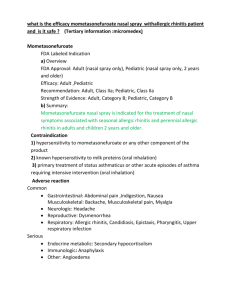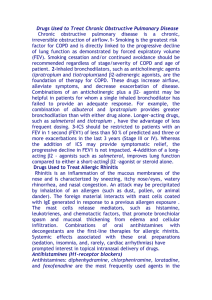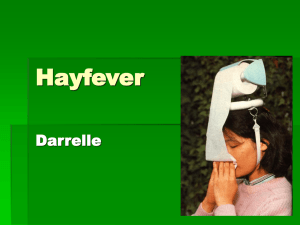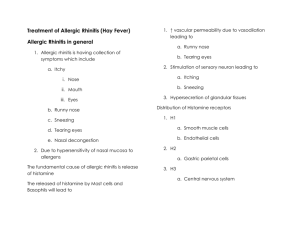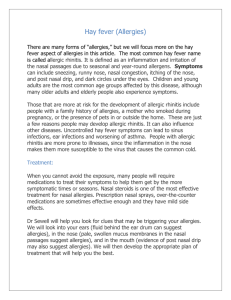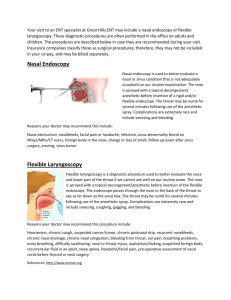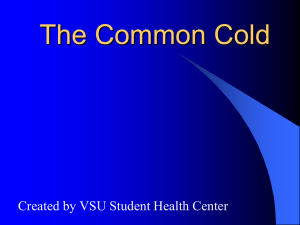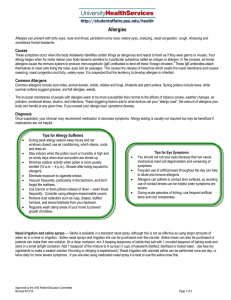Allergic Rhinitis
advertisement
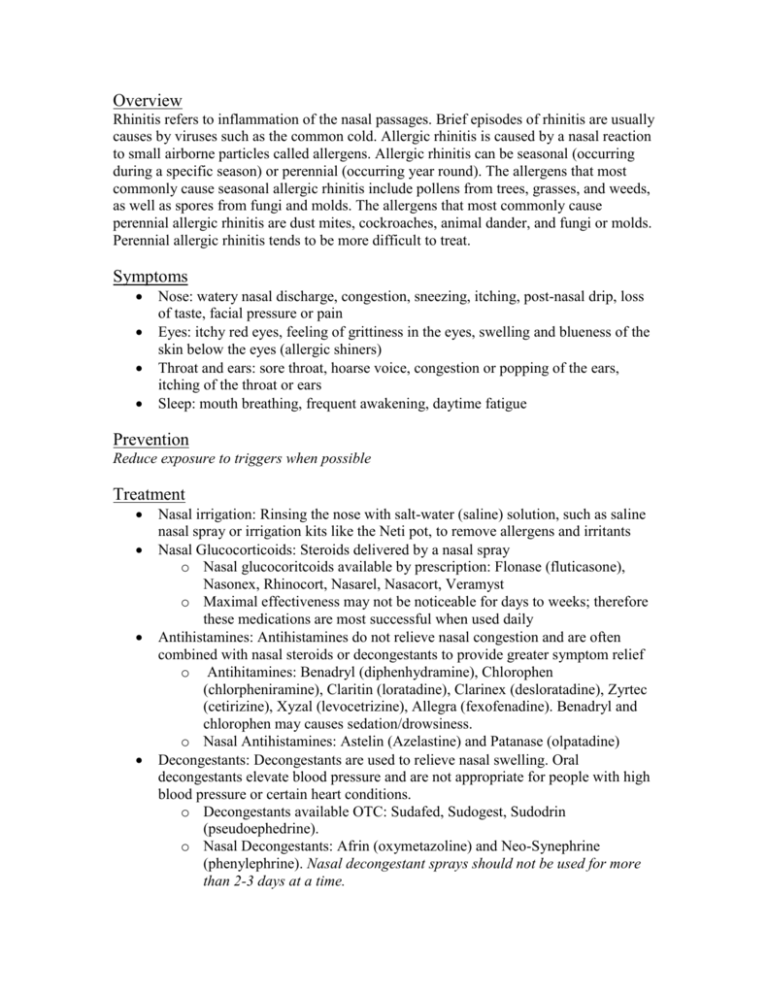
Overview Rhinitis refers to inflammation of the nasal passages. Brief episodes of rhinitis are usually causes by viruses such as the common cold. Allergic rhinitis is caused by a nasal reaction to small airborne particles called allergens. Allergic rhinitis can be seasonal (occurring during a specific season) or perennial (occurring year round). The allergens that most commonly cause seasonal allergic rhinitis include pollens from trees, grasses, and weeds, as well as spores from fungi and molds. The allergens that most commonly cause perennial allergic rhinitis are dust mites, cockroaches, animal dander, and fungi or molds. Perennial allergic rhinitis tends to be more difficult to treat. Symptoms Nose: watery nasal discharge, congestion, sneezing, itching, post-nasal drip, loss of taste, facial pressure or pain Eyes: itchy red eyes, feeling of grittiness in the eyes, swelling and blueness of the skin below the eyes (allergic shiners) Throat and ears: sore throat, hoarse voice, congestion or popping of the ears, itching of the throat or ears Sleep: mouth breathing, frequent awakening, daytime fatigue Prevention Reduce exposure to triggers when possible Treatment Nasal irrigation: Rinsing the nose with salt-water (saline) solution, such as saline nasal spray or irrigation kits like the Neti pot, to remove allergens and irritants Nasal Glucocorticoids: Steroids delivered by a nasal spray o Nasal glucocoritcoids available by prescription: Flonase (fluticasone), Nasonex, Rhinocort, Nasarel, Nasacort, Veramyst o Maximal effectiveness may not be noticeable for days to weeks; therefore these medications are most successful when used daily Antihistamines: Antihistamines do not relieve nasal congestion and are often combined with nasal steroids or decongestants to provide greater symptom relief o Antihitamines: Benadryl (diphenhydramine), Chlorophen (chlorpheniramine), Claritin (loratadine), Clarinex (desloratadine), Zyrtec (cetirizine), Xyzal (levocetrizine), Allegra (fexofenadine). Benadryl and chlorophen may causes sedation/drowsiness. o Nasal Antihistamines: Astelin (Azelastine) and Patanase (olpatadine) Decongestants: Decongestants are used to relieve nasal swelling. Oral decongestants elevate blood pressure and are not appropriate for people with high blood pressure or certain heart conditions. o Decongestants available OTC: Sudafed, Sudogest, Sudodrin (pseudoephedrine). o Nasal Decongestants: Afrin (oxymetazoline) and Neo-Synephrine (phenylephrine). Nasal decongestant sprays should not be used for more than 2-3 days at a time. How to use a nasal spray If your nose is crusted or contains mucus, it should first be cleaned with a saline nasal spray. Position your head normally or with the chin slightly tucked. The spray should be directed away from the nasal septum (the cartilage that divides the two sides of the nose). Dispense one spray and then sniff in slightly to pull it into the higher parts of the nose. Sniffing too hard will result in the medicine draining down the throat, and should be avoided. Some people find that holding one nostril closed with a finger improves their ability to draw the spray into the upper nose.
